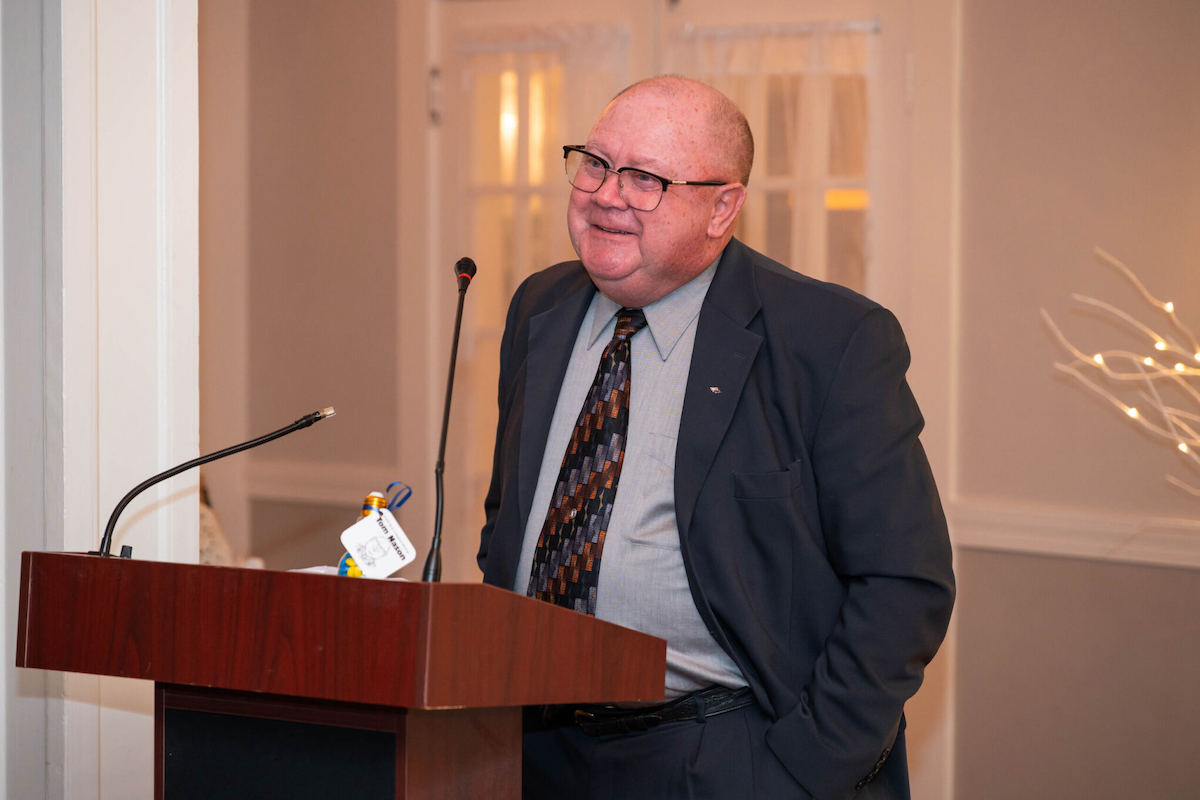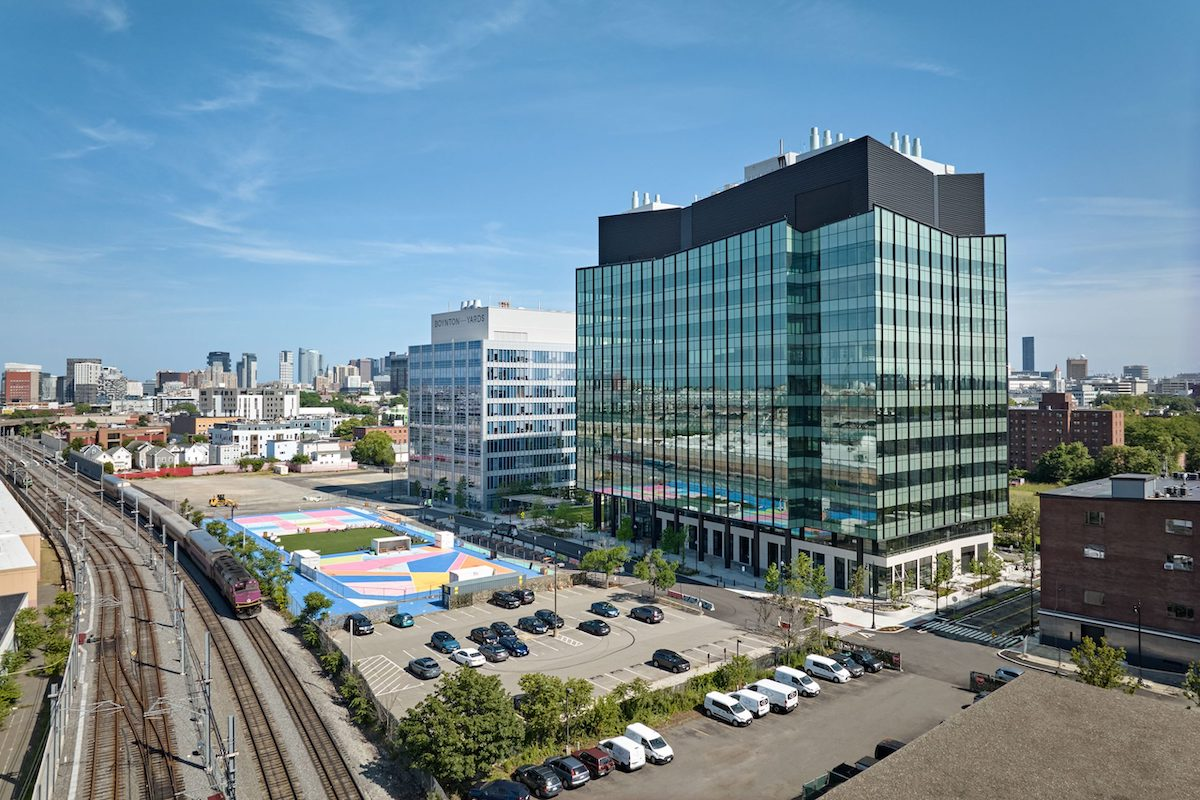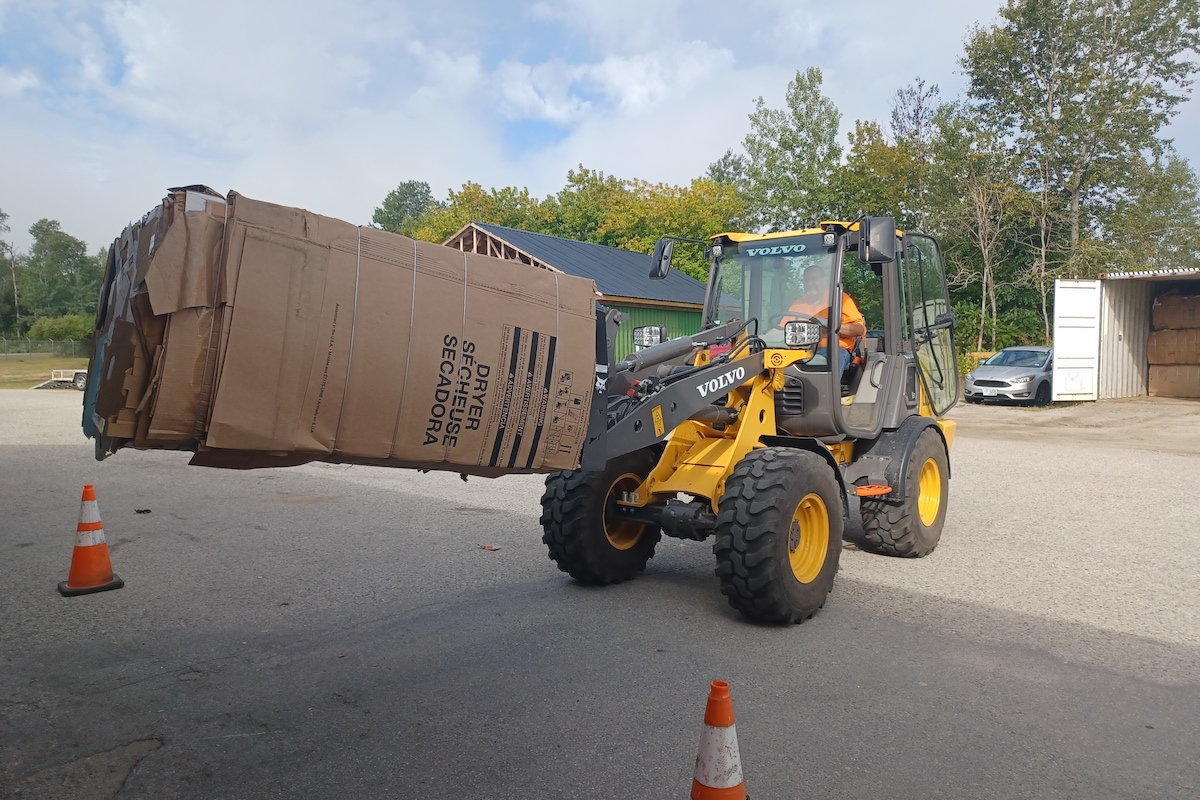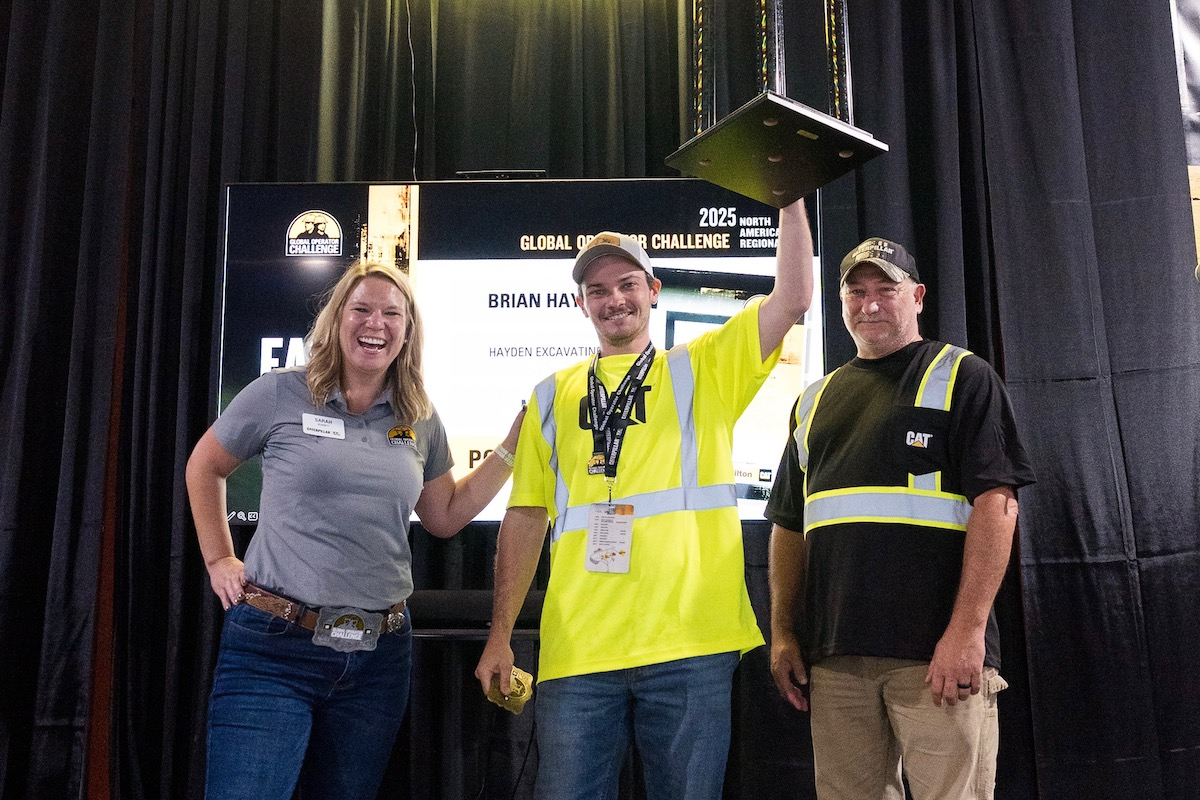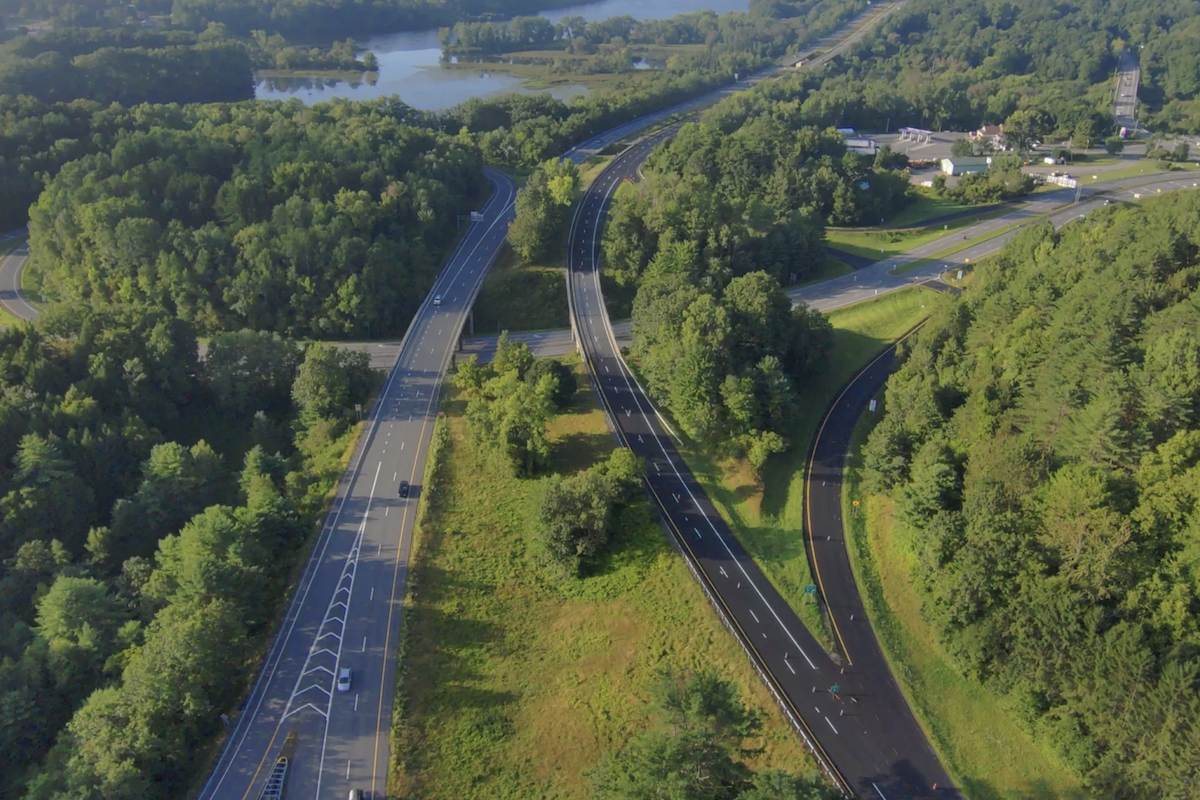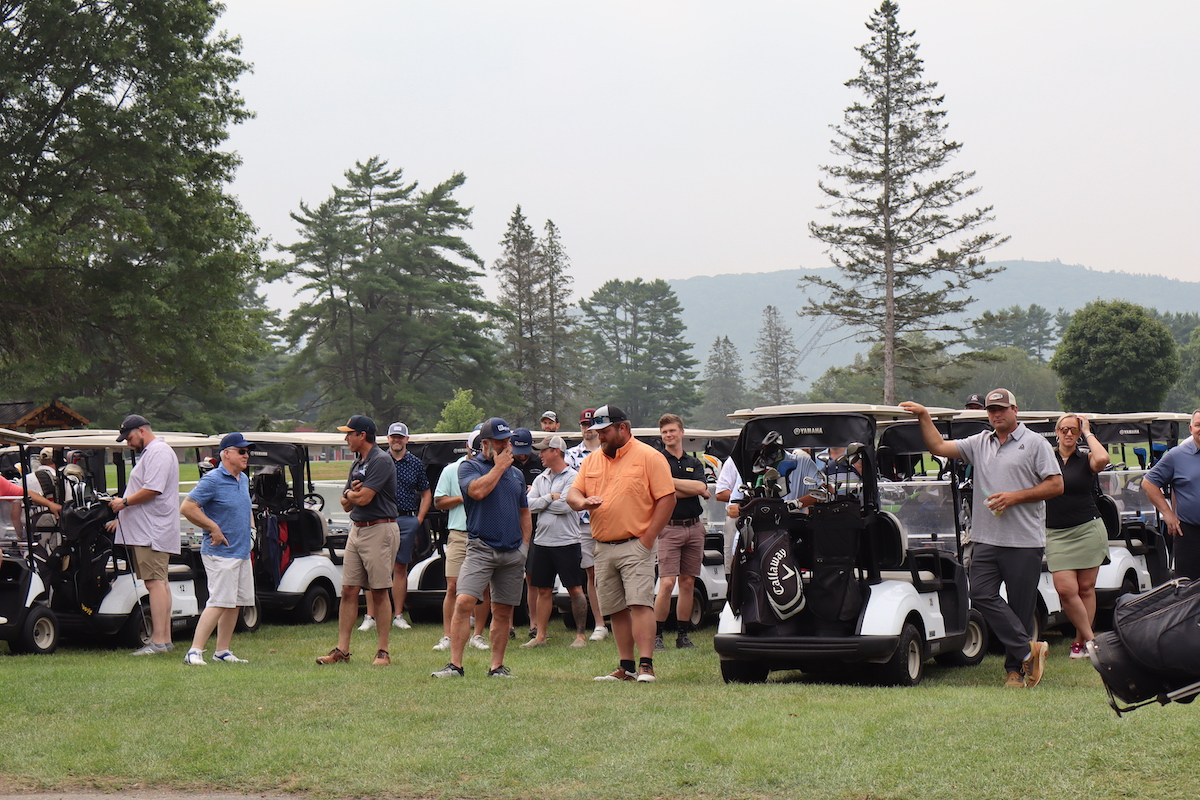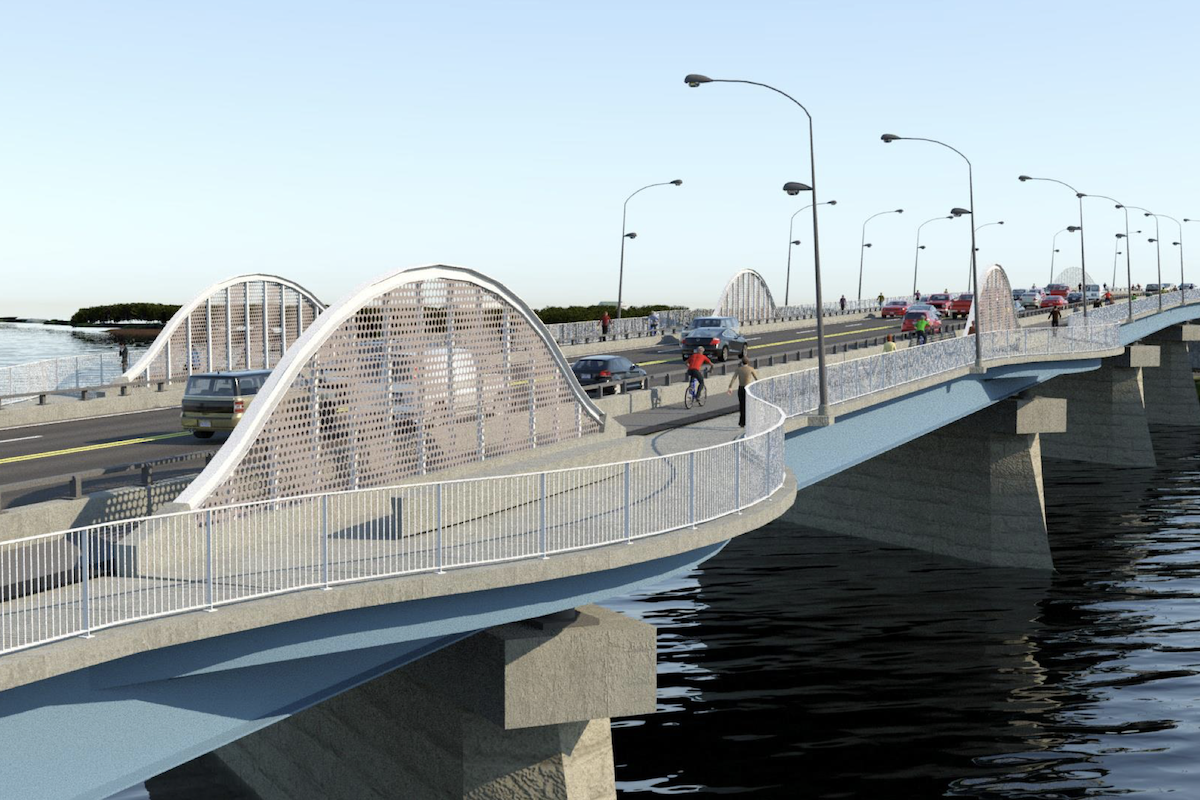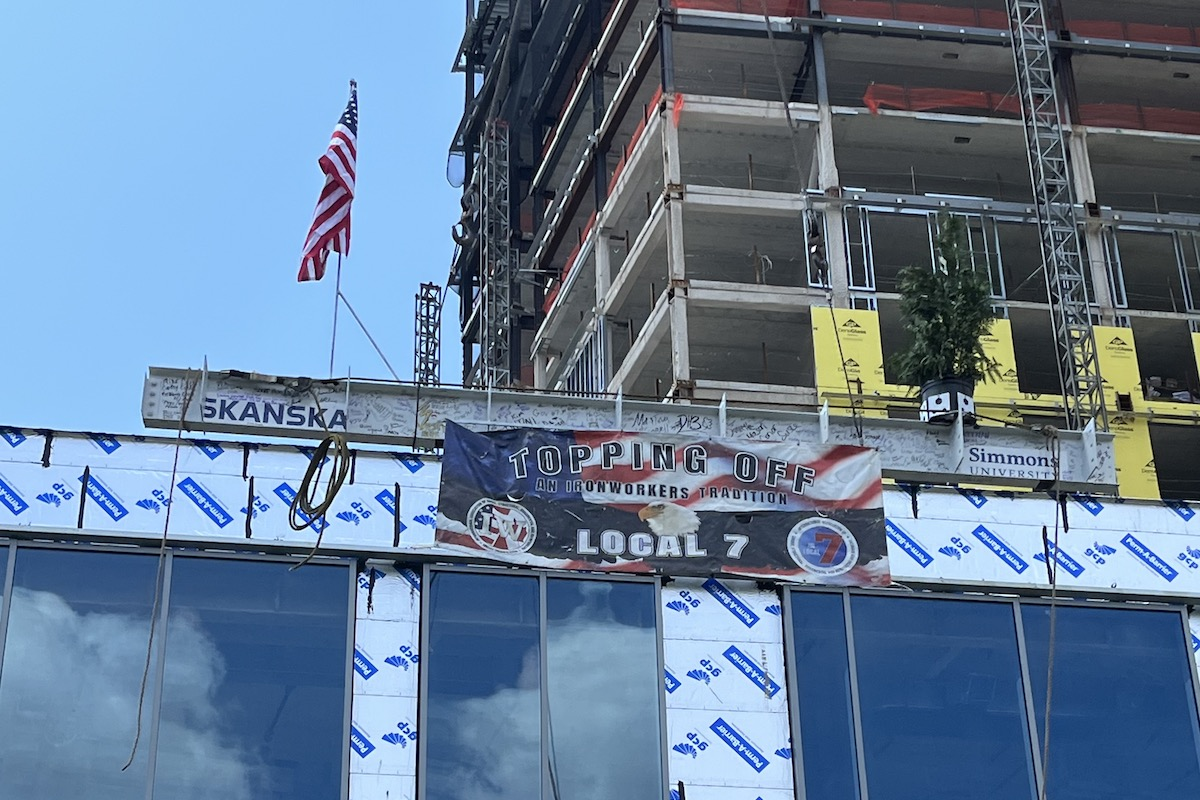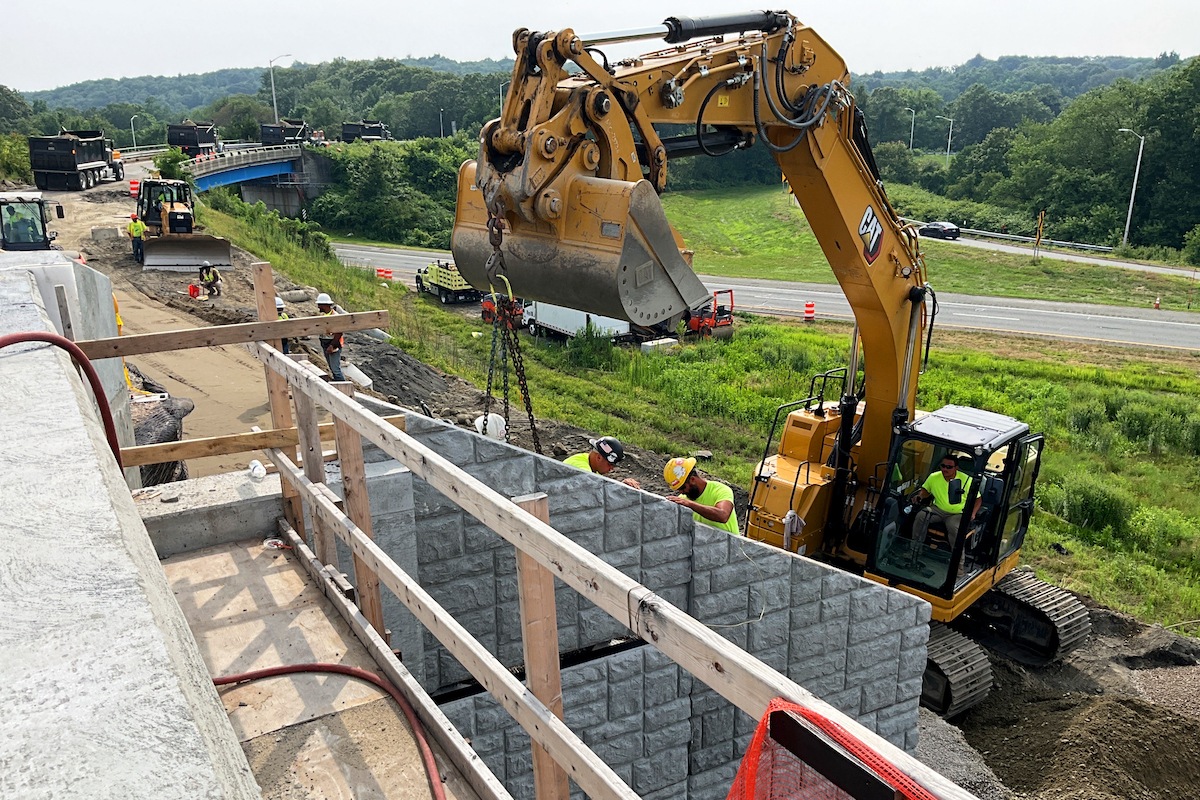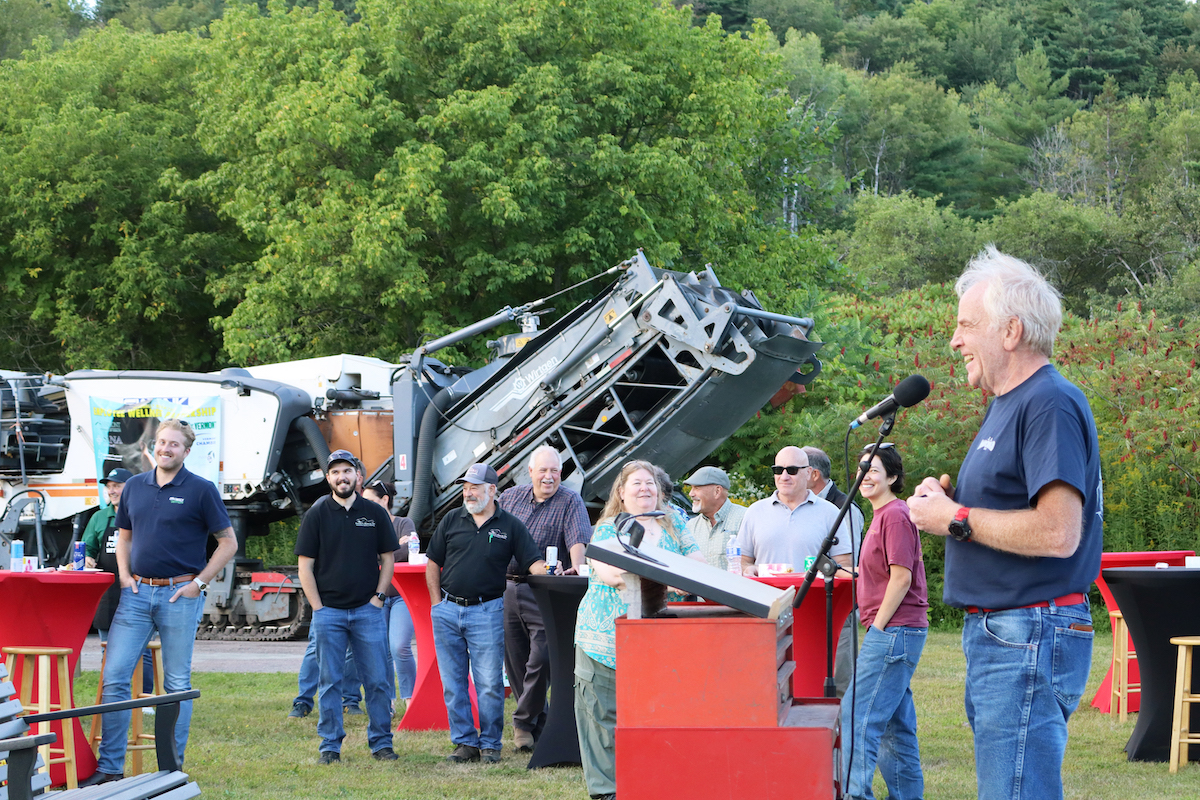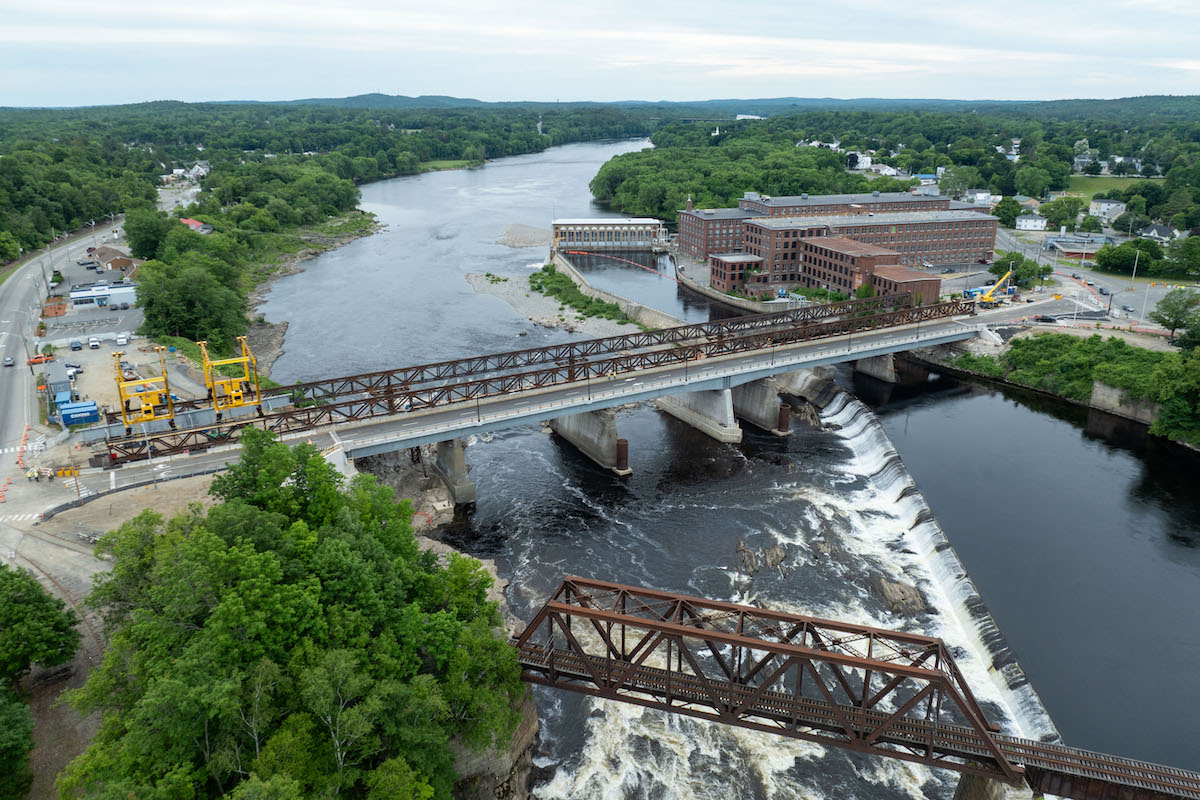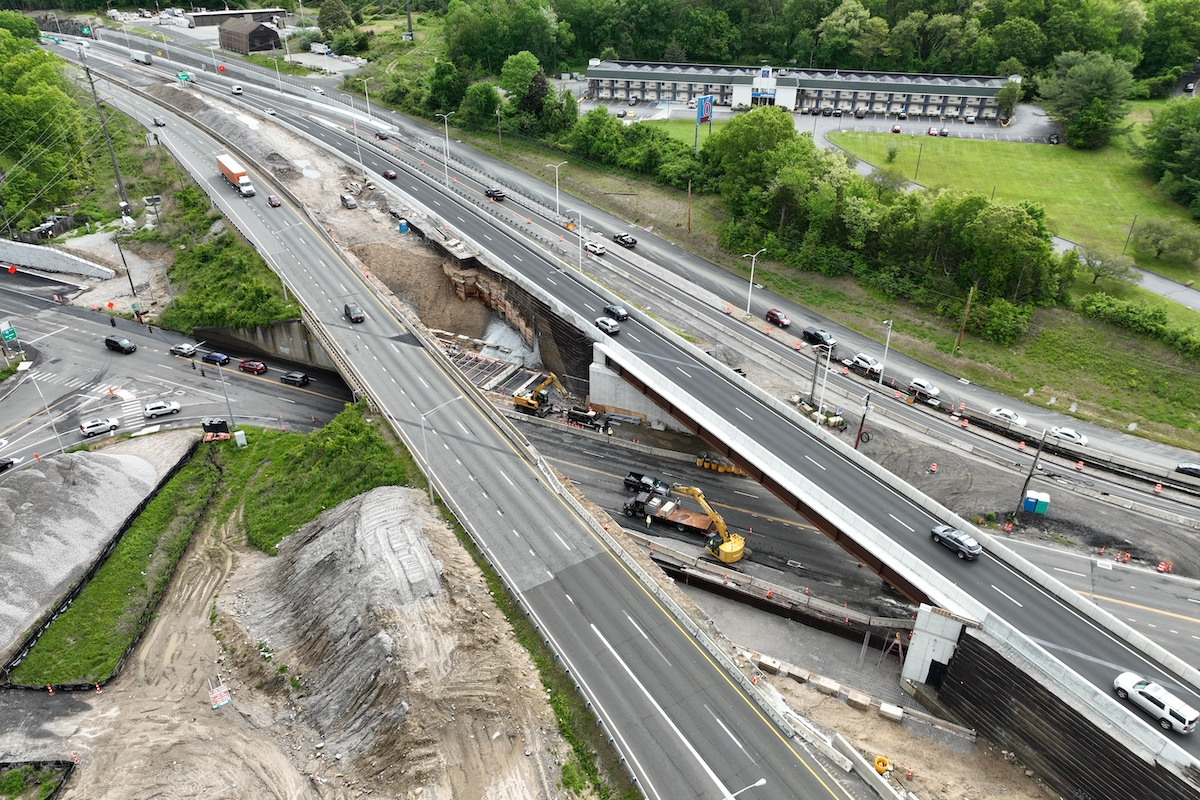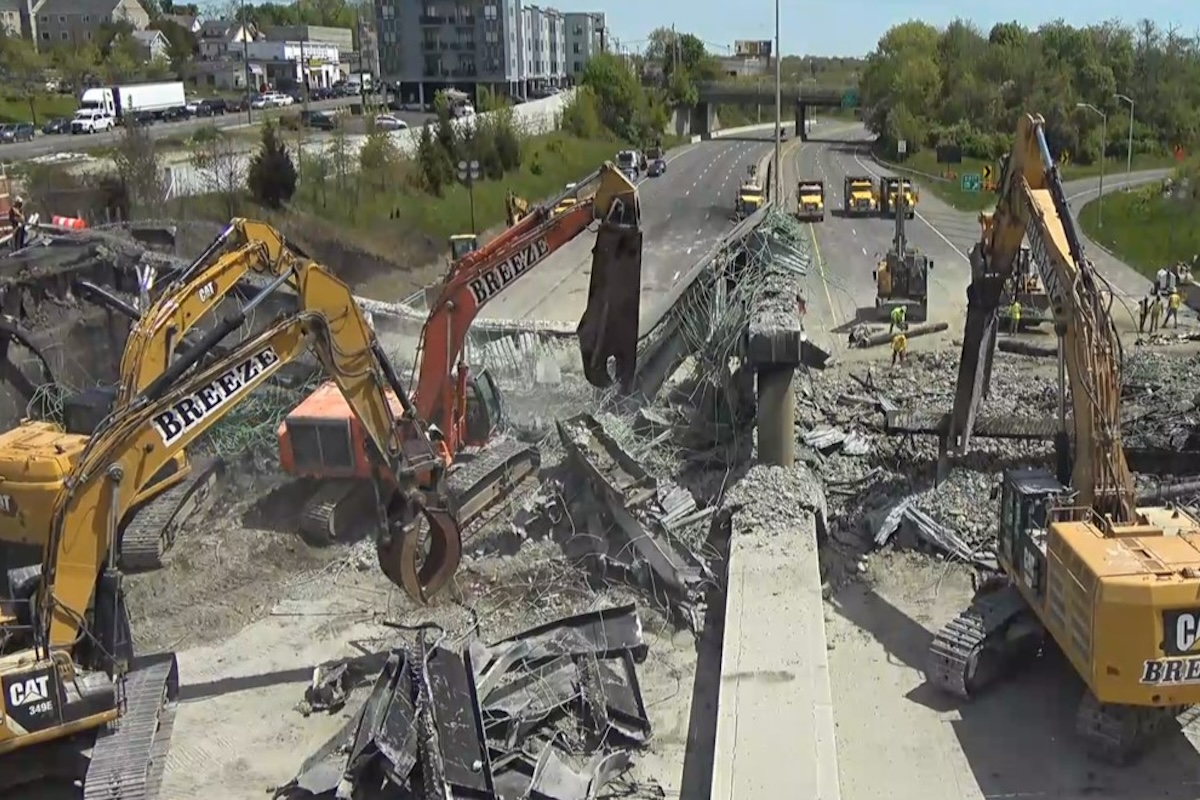“This was identified by the Indianapolis Metropolitan Planning Organization as one of the more dangerous intersections,” said Matt Lee, Bridge Program Engineer with Hamilton County. “Another reason was an increase in traffic.”
Approximately 37,000 vehicles travel on 146th Street in the area daily, with an expected 48,600 daily in 2043. Nearly 15,000 drivers use Allisonville each day, which the county expects to increase to 21,000 in 2043.
“The existing intersection is one of the more congestion-related intersections in the area,” said John Horvet, Project Manager for Superior Construction Co. of Portage, Indiana, the contractor working on the project.
The new interchange includes building a bridge on 146th Street over Allisonville Road, adding ramps to enter and exit 146th Street onto a new roundabout, installing a new storm sewer system, paving with 6,640 square yards of hot mix asphalt, and adding curbing, sidewalks, and ornamental street lighting. The work also involves widening the White River Bridge to the west to match the flow of traffic leading to the primary interchange.

| Your local Volvo Construction Equipment dealer |
|---|
| Tyler Equipment |
United Consulting and Butler, Fairman & Seufert (BFS), both with offices in Indianapolis, designed the new interchange. United serves as the engineer of record, while BFS handled the White River Bridge and the final signage. United Consulting and the Lochmueller Group of Evansville, Indiana, manage the construction.
Hamilton County has provided about 80 percent of this project’s construction funding. Indiana will provide the balance and manage the construction. The project received $9.5 million in federal funds.
Lee considers the maintenance of traffic and making sure the work zone is safe for workers and the traveling public the most challenging aspects of the project.
“A key part of the project is the phased nature of the work,” Horvet said. “When we started the job, it was broken down into eight phases of construction.”
Superior and its subcontractors came up with a way to realign the original phases to save time. “It helped us with our goal to finish the project earlier than anticipated,” Horvet said.
In the fall of 2023, the team added lanes to the westbound 146th Street White River Bridge, lifting the precast concrete girders into place during an overnight closure of 146th Street.
Crews are working in a small work area on the White River Bridge. “It has challenged Superior to innovate on our construction methods,” Horvet said. “We used some specialized equipment we had not used before.”
For example, Superior brought in a different than normal pile hammer system for the White River Bridge because the existing overhead clearance was so low, traditional equipment would not fit. The smaller pile hammer enabled crews to avoid removing any of the structure to drive the additional piles needed for widening.
Also on that bridge, Superior found it not feasible to build a full-length causeway to work off of and support the crane. Instead, crews decided to use two cranes located on the existing bridge for tandem picks from above the piers. After completion of the westbound White River Bridge widening, Superior was able to move traffic onto the westbound bridge while work progressed on the eastbound side.
Crews working around the river took steps to ensure sediment or contaminants did not enter the water. Superior developed a comprehensive stormwater management plan and is following requirements of the U.S. Army Corps of Engineers and environmental agencies’ permits to limit any discharge from the construction site. State-certified environmental managers monitor the job site.
Lee and Horvet said that drivers in central Indiana are familiar with roundabouts. They do not anticipate problems with drivers becoming comfortable with it. In addition to the on and off ramps to and from 146th Street, Allisonville traffic will be able to use the roundabout to continue moving north and south.
Superior moved 97,150 cubic yards of fill to complete the earthwork phase. Crews used that dirt at the White River Bridge widening and to raise 146th Street 25 feet and lower Allisonville Road 4 to 5 feet to facilitate the grade separation. More than 28,000 square feet of mechanically stabilized earth (MSE) walls support the end sections of the bridge on 146th over the roundabout. Crews used some of the dirt brought in to fill behind those MSE walls. The grade is not changing on the bridges over the White River, so crews must gradually bring 146th Street back to its original grade before reaching the bridges.
Dropping Allisonville Road required a significant amount of drainage work. Crews installed 300 new drainage structures and 10,726 linear feet of storm sewer pipes. Most of the piping follows the on and off ramps, collecting water before it reaches the roundabout. That piping will allow the stormwater to flow to the community’s drainage system and, ultimately, the White River.
The project adds concrete sidewalks, which tie into the area’s trail system, increasing safety for pedestrians. Some of the 4,370 cubic yards of concrete used on the project were for the sidewalks. Some concrete is used for curbs and gutters.
Additionally, the three-span 146th Street Bridge over the roundabout will have concrete girders and two piers within the roundabout. And the roundabout will have a strong concrete apron for trucks to cross the roundabout if they are unable to navigate the radius of the curve.
Horvet praised the collaboration between Superior, Hamilton County, and the design team for helping to resolve any issues that came up in a fair way. Superior meets each week with county officials to sit down and help find the best approach to completing the project, Horvet said.
“This team has done a good job,” Lee said. “If they have concerns, they raise them, so there can be a discussion to come up with good solutions.”
The project is about 40 percent complete, with a substantial finish date in June 2025. Superior aims to wrap up construction early.
“This should provide a better intersection for the community and improve safety,” Lee said. “It should also reduce congestion during peak travel times.”























